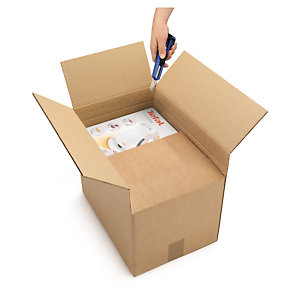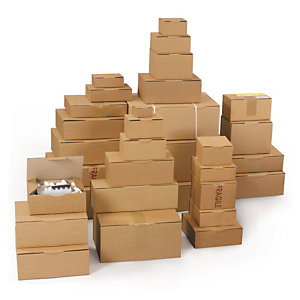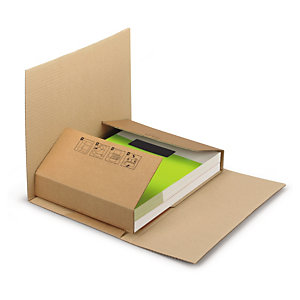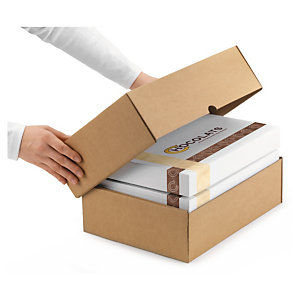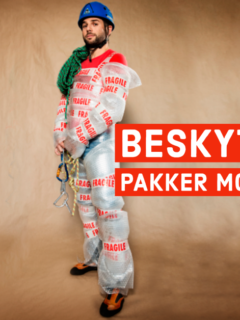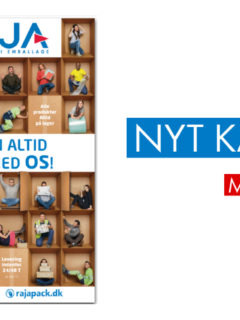Optimize the volumetric weight if you want to save on your transport costs…
…and what do we mean by that. Volumetric weight reflects the density of the package, which is the space a package takes up in relation to its actual weight. It’s a method many carriers use to figure out how much the package takes up in transit, and it’s usually what they bill for if it exceeds the package’s actual weight. It is therefore important to reduce voids and adapt your packaging to the product. In this post we will give you some tips on packaging that can optimise quickly and easily. In addition, we have included useful links to the shipping companies that we know use this volumetric weight.

Shipping weight is the weight you are billed and pay for. This can be both the actual weight of your package, but also its volumetric weight, it depends which number is greater.
UPS describes it on their website like this:
“Billable weight is the weight used to calculate the tariff. For domestic and international services, billable weight is the weight that is greater after comparing volumetric and actual weight.”
UPS – Help center
PostNord puts it this way:
If the volumetric weight of the package is greater than its weight, the price is determined solely by the volumetric weight of the package.
PostNord – Volume calculator
All modes of transport, whether by sea, air or parcel truck, are limited by space and a maximum weight. Therefore, carriers compare a cargo’s actual weight and volume by converting volume to ‘volumetric weight’ – they do this to make the most of the real space they have available. The conversion factor depends on the mode of transport and the carrier; therefore you should always check with the individual carrier which calculation they use (transport magazine, has a good article on freight weight here) – the calculation most commonly used and applied to general parcel transport is illustrated above and elaborated here:
(PACKAGE SIZE: height x length x width) / 5000
= VOLUMETRIC WEIGHT OF THE PACKAGE

3 tips for optimisation:
Analyze
Start by analysing which orders you have the most of and what size of boxes you use most often, this will help you find the size range your key sellers are moving within. You will also avoid storing too many boxes that you don’t use very often. Here you will be able to see if it makes sense for you to acquire adjustable boxes (see section on products), as they require less storage and make the packing process more manageable. You will also identify the sizes you use most, which should be the key packaging (the prioritised and developed packaging – customer experience is also at play here).
Products that help optimisation
Boxes that can be adjusted in height: A box like this can be customised for each product, which is really smart. You only need to buy one type of box for many different products, which saves you space at the packing station and makes the packing process more manageable for your packer.
Mailboxes: The classic mailboxes come in a huge range of varieties and are ideal for smaller mail orders – in our range you will find no less than 70 sizes in brown and white respectively. They don’t take up much space, are easy to assemble and don’t require much space.
Covers: Covers, cross covers, book covers – well, the dear child has many names. One thing covers are particularly good at is adapting – in fact, most are height adjustable and protect extremely well. If you have products that can use these, they’re really smart.
Telescopic boxes: A telescopic case is where you adjust the height via the lid. It’s a really strong box, as the overlap and folding form double layers that provide extra protection. Ideal for lighter products of varying height such as textiles, scarves, bags etc.
Telescope. Telescopic crates: telescopic crates: telescopic crates can also do the job, it doesn’t have to be so sophisticated. The important thing is that you find your spectrum, don’t acquire too many sizes and at the same time reduce the voids. On our website you can find more than 800 sizes of general folding boxes. Our box selector makes it easy to find the sizes you are looking for:
If we have to sum up quickly, it is important that you analyse your product and choose the packaging that makes sense for the product. The clever thing about “multiple boxes in one box” is that you optimise on several parameters at the same time. Our specialists can help you with your questions: tel. 44 58 77 00.
Optimise the packaging process

When an employee is packing and it has to go fast. Then it is alpha omega that all the necessary things are within reach. Make it easy and clear at the packing station and make everything easily accessible. 3 easy tips:
- 1: Start with a good workstation where all the packing materials are located. See our Packing Table.
- 2: Put the optimized sizes of boxes within easy reach.
- 3: Train and teach your team volumetric weight.
Freight companies and links:
Most parcel companies use volumetric weight as a basis for calculation. We’ve done a little research on it, and found the useful links for you:
PostNord: Via this link you will find a volume calculator and PostNord’s guidelines.
UPS: Via this link UPS has described their cleaning guidelines for packaging. If you go back via the breadcrumb you can find a lot of useful information. This link is to Volumetric weight and how they calculate.
DHL: In this link DHL has given some tips to ‘pack with care’ – on the right you will find their volumetric calculator in a popup window. Here it is possible to calculate both tubes and boxes, we like that 🙂
Pakke.dk: Is a site that gathers all distributors. On their site we have found the following information (LINK):
“Volume weight
Pakke.dk’s pricing system is based on volume weight. Volume weight is the transport industry’s way of converting volume into weight. To find the volume weight, you first multiply the length, width and height in cm. Then divide by 5000. E.g. (LxWxH)/5000.
The volume weight is maintained against the actual weight. The higher of the two weights is used to calculate the price.“
Finally, thank you for reading. Think about the volume of packaging when you pack and look at the calculation. Are you spending unnecessary money on boxes that are too big, with too much empty space? If so, hurry up and optimise.
Should you have any questions, please feel free to contact our specialists on tel. 44 58 77 00, or via the live chat on the website:












